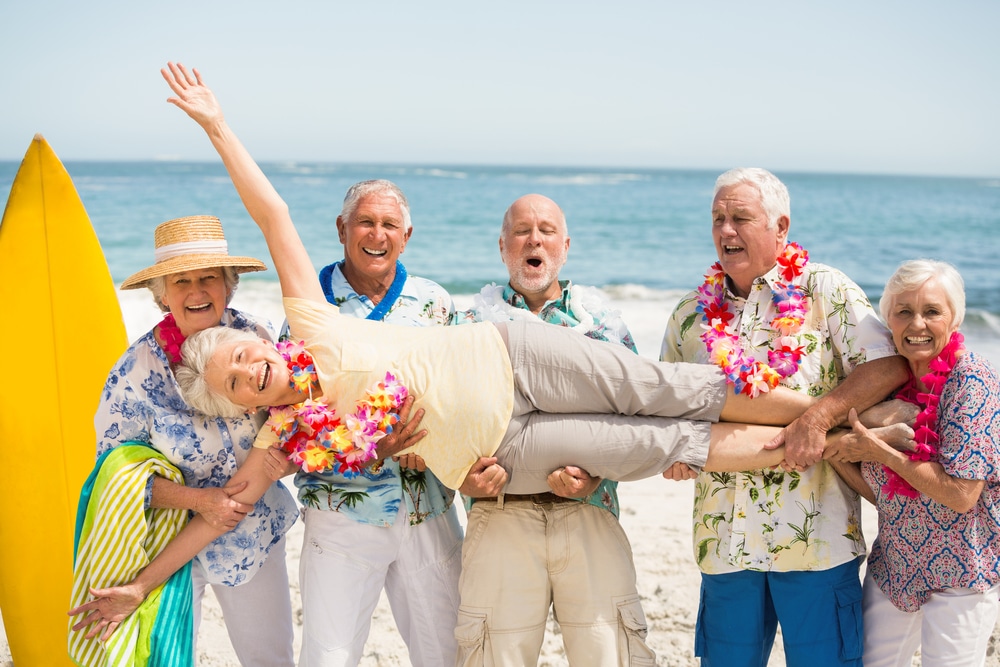Vacations for senior citizens offer a unique opportunity to explore new horizons, relax, and create lasting memories. This guide delves into the planning process, considering various factors crucial for a safe, enjoyable, and fulfilling experience. We’ll explore different vacation types, ideal destinations, budgeting strategies, and essential health and safety considerations to ensure a memorable trip tailored to the needs and preferences of senior travelers. The goal is to empower senior citizens to plan and enjoy well-deserved getaways, maximizing their comfort and enjoyment.
From adventurous expeditions to tranquil retreats, we’ll examine diverse options catering to various mobility levels and interests. We’ll also provide practical advice on booking accessible accommodations, managing health concerns while traveling, and navigating the financial aspects of senior travel, all to ensure a seamless and stress-free experience.
Health and Safety Considerations
Planning a vacation is exciting, but for senior citizens, ensuring health and safety is paramount. This section addresses potential health risks associated with travel and offers strategies for mitigation and management, ultimately contributing to a worry-free and enjoyable trip.
Travel, even for short distances, presents unique challenges for older adults. Pre-existing conditions can be exacerbated by changes in routine, climate, and physical activity levels. Furthermore, the unfamiliar environment can increase the risk of accidents and injuries. Proactive planning and preparation are crucial to minimizing these risks.
Potential Health Risks and Preventative Measures
Several health risks are amplified during travel for senior citizens. These include exacerbation of chronic conditions like heart disease, respiratory illnesses, and arthritis; increased risk of falls and fractures due to unfamiliar surroundings and potential mobility limitations; dehydration from changes in climate and activity; and exposure to infectious diseases. Preventative measures involve consulting a physician before travel to review existing medications and discuss potential risks, ensuring all necessary vaccinations are up-to-date, packing appropriate medications and medical supplies, and choosing destinations and activities appropriate for one’s physical capabilities. For example, selecting a destination with a similar climate to one’s home reduces the risk of sudden temperature changes and potential respiratory complications. Similarly, choosing accommodations with accessible features minimizes the risk of falls.
Managing Common Health Issues While Traveling
Effective medication management is vital. Carry sufficient medication in its original packaging, along with a copy of prescriptions. Consider carrying a list of medications, dosages, and potential side effects. In case of emergencies, having readily available information about allergies and medical history is critical. Access to healthcare while traveling requires planning. Research local healthcare facilities and emergency services before departure. Travel insurance with medical coverage is highly recommended, providing access to medical assistance and repatriation if needed. For example, a senior citizen with diabetes needs to ensure they have enough insulin and supplies, understand the local availability of insulin, and have a plan for managing their blood sugar levels while traveling.
Essential Items and Documents Checklist for Senior Travelers
A well-prepared checklist can significantly reduce stress and ensure a smoother journey. This should include: a comprehensive list of all medications with dosages and instructions; copies of prescriptions and medical records; emergency contact information (including local contacts if applicable); travel insurance details; a list of allergies and medical conditions; identification documents (passport, driver’s license, Medicare card); any necessary medical devices (e.g., hearing aids, walkers); comfortable and supportive footwear; and a first-aid kit containing essential supplies such as bandages, antiseptic wipes, pain relievers, and any personal medications needed for common ailments. Remember to pack enough medication to cover the duration of the trip, plus a few extra days in case of unforeseen delays.
Companionship and Social Aspects
Vacations, for seniors especially, are not just about sightseeing; they’re about enriching experiences that foster well-being. A key element of a fulfilling senior vacation is the opportunity for meaningful companionship and social interaction, combating loneliness and promoting a sense of community. These social aspects significantly enhance the overall enjoyment and positive impact of the trip.
Maintaining social connections is crucial for seniors’ mental and physical health. Social isolation can lead to increased risks of depression, cognitive decline, and even physical health problems. A well-planned vacation can actively counteract these risks by providing opportunities for new connections and strengthening existing ones.
Benefits of Group Travel for Seniors
Group travel offers a structured environment where seniors can easily connect with others who share similar interests and travel styles. The shared experiences, from guided tours to meals together, create natural opportunities for conversation and bonding. This built-in social network can alleviate feelings of loneliness and provide a sense of security, particularly for those traveling solo. For example, a group tour focused on historical sites might bring together individuals with a shared passion for history, fostering instant camaraderie. The shared activities and planned itineraries minimize the stress of independent travel planning, allowing seniors to focus on enjoying the company and the destinations.
Finding Travel Companions
Several avenues exist for seniors seeking travel companions. Senior-specific travel agencies often organize group trips tailored to the needs and interests of older adults, automatically building a group dynamic. Online forums and social media groups dedicated to senior travel provide platforms to connect with potential travel buddies who share similar travel styles and interests. Consider, for example, joining a Facebook group dedicated to “Senior Adventures in Europe” to connect with others planning similar trips. Local senior centers and community organizations frequently arrange group excursions, providing a safe and familiar environment for seniors to explore new places together.
Maintaining Social Connections While Traveling
Beyond group travel, seniors can maintain social connections during their vacations in various ways. Participating in organized tours provides opportunities for interaction with both fellow travelers and local guides. Attending local events, such as cultural festivals or community gatherings, offers chances to engage with the local population and learn about their culture. Even something as simple as dining at a restaurant with other patrons can spark spontaneous conversations and create new connections. Joining a walking tour, for instance, allows for interaction with other participants while exploring a new city. The shared experience of exploring a new landmark or enjoying a local meal provides a common ground for conversation and friendship.
Closing Notes
Planning a vacation as a senior citizen doesn’t have to be daunting. By carefully considering the factors discussed – vacation type, destination, budget, health, and companionship – you can craft a truly memorable and enriching experience. Remember to prioritize your comfort and safety, and don’t hesitate to seek assistance from travel professionals specializing in senior travel. With careful planning and a positive attitude, your next adventure awaits!




